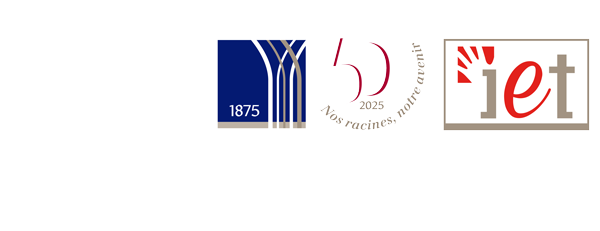
|
Cette unité d’enseignement vise le rôle occupationnel de travailleur. Les dimensions de l’environnement politique, social et physique qui impactent le rendement occupationnel sont abordés dans le cadre d’emplois divers. L’étudiant sera amené à cibler l’analyse des tâches requises de travail et les interventions correspondantes auprès des défis personnels dans différentes situations cliniques dans le cadre professionnel. La prévention, la réintégration et l’harmonisation de la personne dans son emploi sont mis en relief dans cette unité d’enseignement.
Temps présentiel : 18.75 heures
Charge de travail étudiant : 25.25 heures
Méthode(s) d'évaluation : Examen final, Travaux pratiques contrôlés
Référence :
1. Heron, R. (2006), Job and work analysis. Guidelines on identifying jobs for persons with disabilities, ILO Skills and Employability Department, International Labour Organisation.
2. Murray, B., Heron, R. (2003) Assisting Disabled persons in finding employment - A Practical Guide. Port of Spain, International Labour Organisation
3. Parmenter, T. R. (2011), Promoting training and employment opportunities for people with intellectual disabilities: International experience, International Labour organisation.
4. International Labour Office Gender, Equality and Diversity (GED) (2013), Inclusion of people with disabilities in vocational training: A practical guide, international labour organisation.
5. Guide pratique de l’emploi accompagné, DGCS, DGEFP, CNSA, FIPHFP, Agefiph, CFEA, avril 2018
6. ILO Global Business and Disability Network, Fundación ONCE (2019), Making the future of work inclusive of people with disabilities. European social Fund – European Union.
7. Langsford, C., Carelton, M., Vivanco, L., Kun YIN, J., Martinez-Lantigua, J.C., BLANC, P., SZAUER, C., Aro, P., Murray, B. (2002) Managing disability in the workplace : ILO code of practice, International Labour Organisation.
8. Reilly, O. (2007), The right to decent work of persons with disabilities, International Labour Organisation.
9. Défenseur des droits (2017), Guide « Emploi des personnes en situation de handicap et aménagement raisonnable ».
10. Harris, A, Enfield, S. (2012), Disability, Equality, and Human Rights: A Training Manual for Development and Humanitarian Organisations, Oxfam and Action on Disability and Development
11. International Disability and Development Consortium (2012), Making Inclusion a Reality in Development Organisations A manual for advisors in disability mainstreaming.
12. Promoting diversity and inclusion through workplace adjustments: a practical guide / International Labour Office. - Geneva: ILO, 2016.
13. Yahfoufi, D., Employer’s Survey to explore the barriers and facilitators of hiring and employment of persons with disabilities, ESCWA and ILO, Lebanon- 2021
14. Abdallah, I., Yahfoufi, D., Mont, D. (2021), A Snapshot of Persons with Disabilities in Lebanon: Assessing the Basic Needs, Social Protection and Employment Status of Lebanese and Non-Lebanese, International Labour organisation.
15. International Labour organisation (2015) Facts on Disability (Fact sheet).
16. United Spinal Association (2015),“Disability Etiquette” Tips On Interacting With People With Disabilities.
17. Dorsey, J., Mahoney, W. (2015), The Role of Occupational Therapy in facilitating employment of individuals with developmental disabilities (Fact sheet), The American Occupational therapy association AOTA.
18. Dorsey, J., Finch, D., Ehrenfried, H., Jaegers, L. (2017), Occupational Therapy’s Role with Ergonomics (Fact sheet), the American Occupational Therapy Association.
19. Dorsey, J., Finch, D., Ehrenfried, H., Jaegers, L. (2017), Work Rehabilitation (Fact sheet), the American Occupational Therapy Association
20. Kaskutas, V., Gerg, M., Fick, F., Dorsey, J. (2012), Occupational Therapy Services at the Workplace: Transitional Return-to-Work Programs (Fact sheet), the American Occupational Therapy Association.
21. Goodrich, B., Garza, E. (2015), Occupational Therapy’s Role with Providing Assistive Technology Devices and Services, the American Occupational Therapy Association.
22. American Occupational Therapy association, AOTA’s Transition and Autism Work Groups (2013),What is the Role of Occupational Therapy in Supporting Employment of Young Adults with Disabilities? Frequently Asked Questions (FAQ)
23. الجريدة الرسمية – العدد 25 – 8-6-2000، قانون حقوق الأشخاص المعوقين رقم220
Sites web :
- Fact sheets (disability etiquette, inclusive language, Business benefits of hiring people with disability, Welcoming Customers with Disability, Interviewing People with Disability, Corporate Social Responsibility, Workplace Adjustments) Australian network on disability: https://www.and.org.au/pages/fact-sheets.html
- The Convention on the Rights of Persons with Disabilities (2006), the United Nations - Department of Economic and Social Affairs – Disability: https://www.un.org/development/desa/disabilities/convention-on-the-rights-of-persons-with-disabilities.html
- OPP, A. (2021) Ergonomics and Occupational Therapy: Improving Workplace Productivity AOTA: https://www.aota.org/About-Occupational-Therapy/Professionals/WI/Articles/Improving-Productivity.aspx
|


